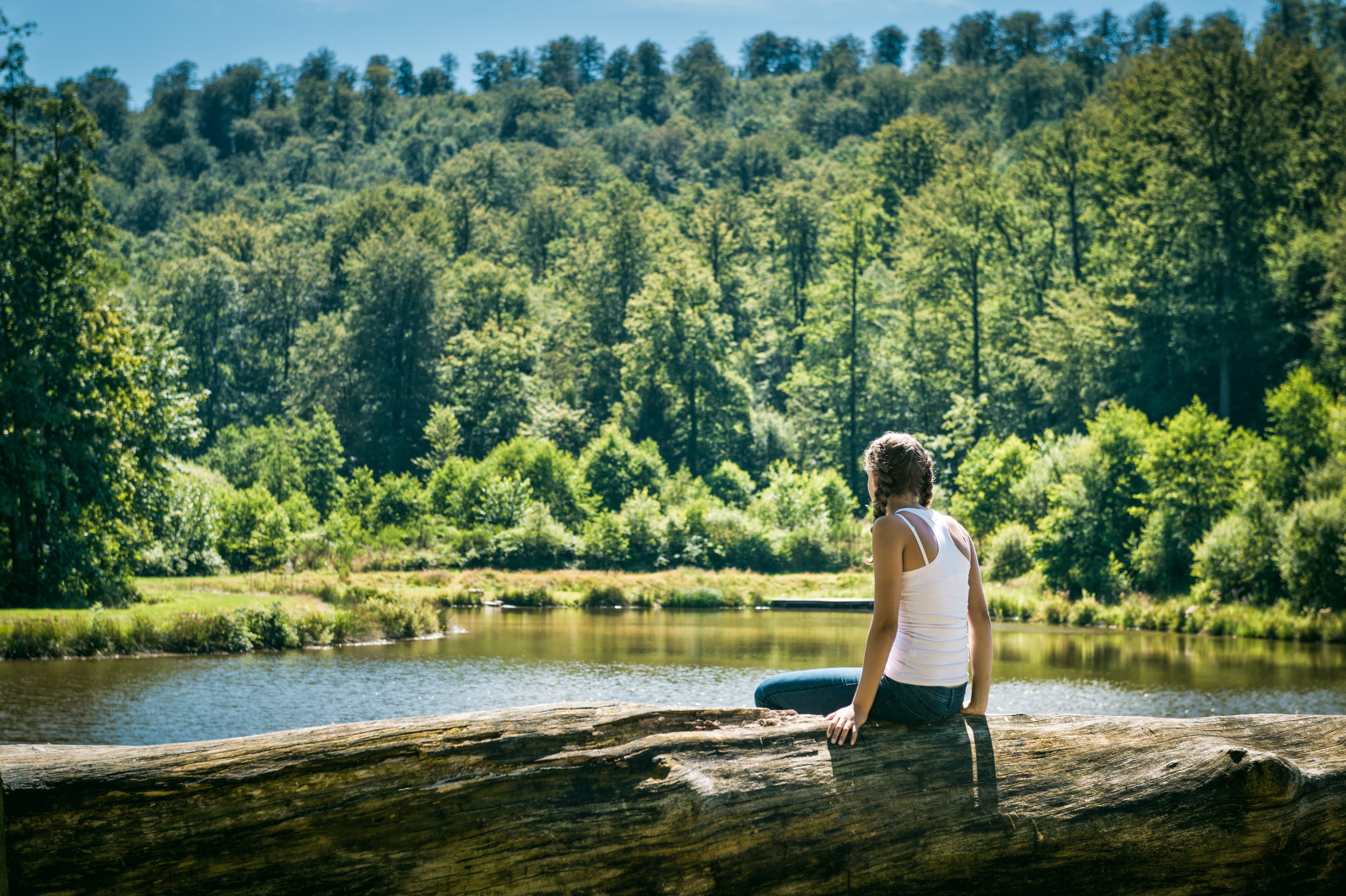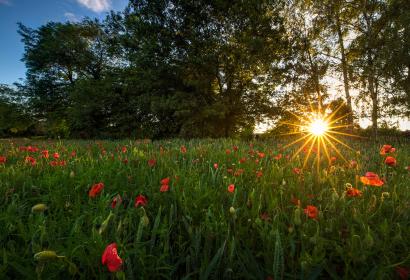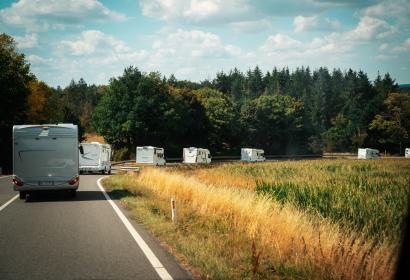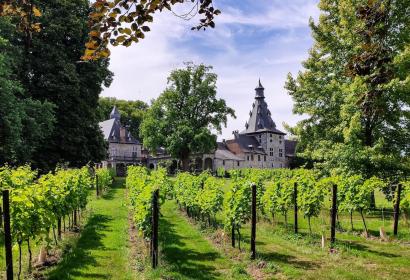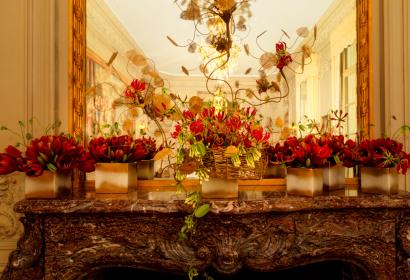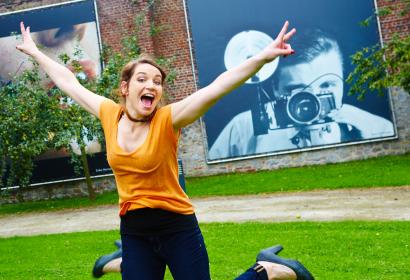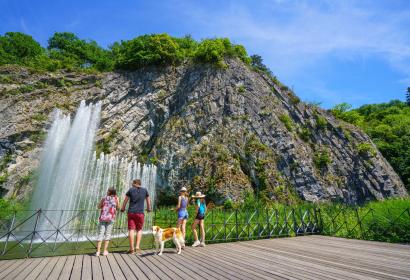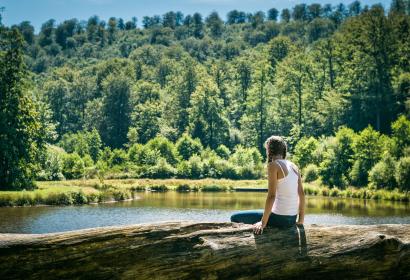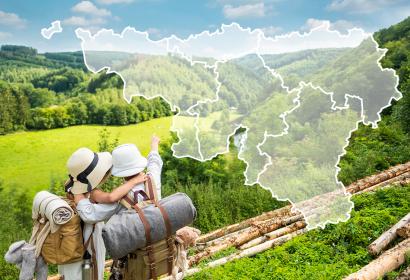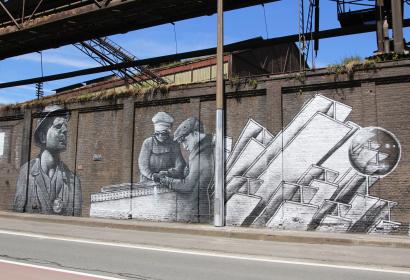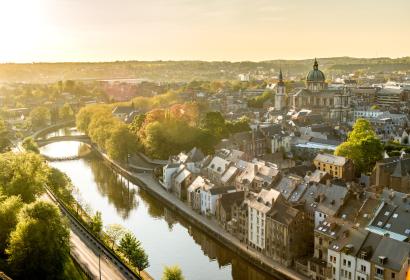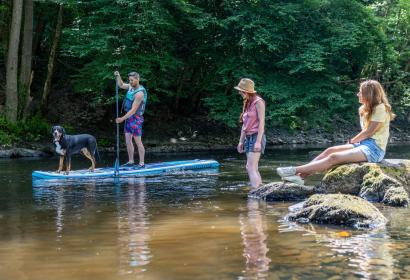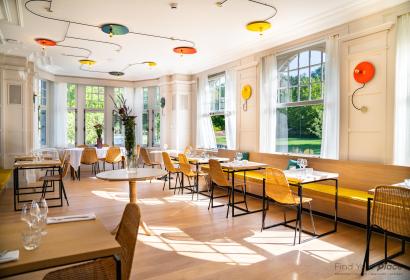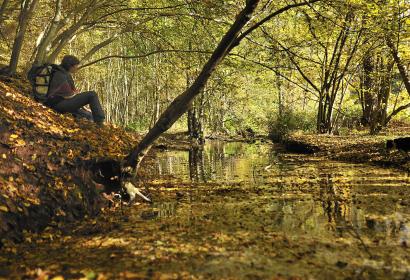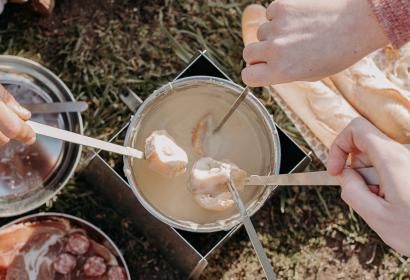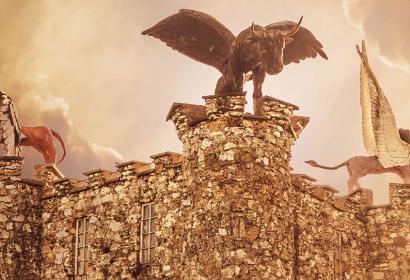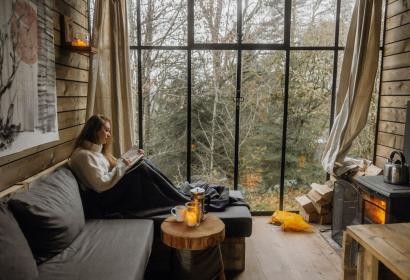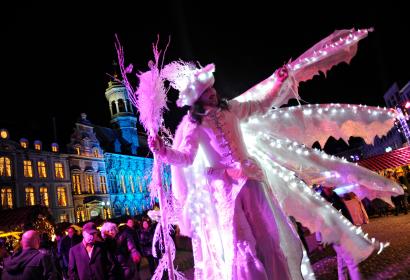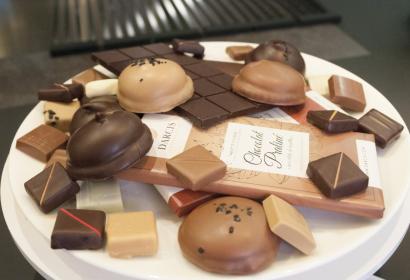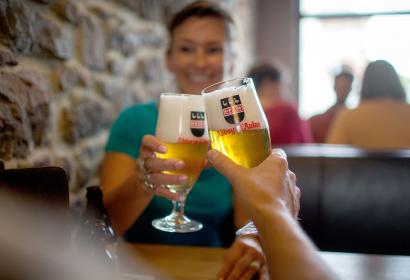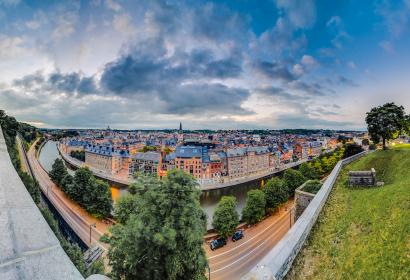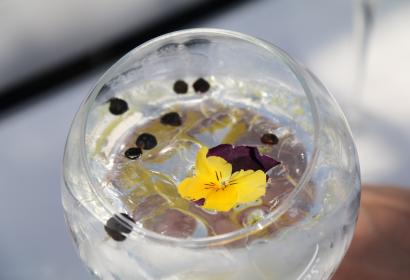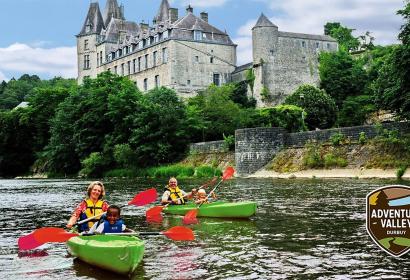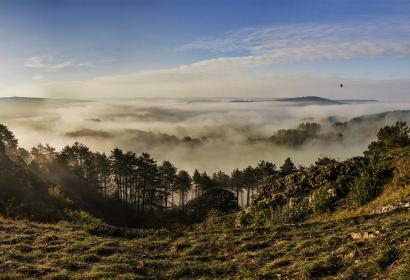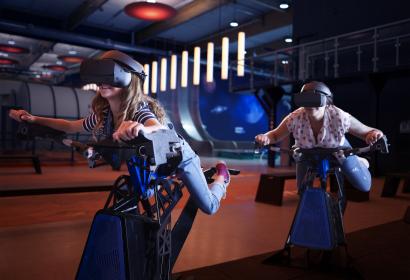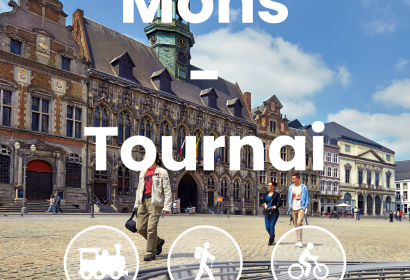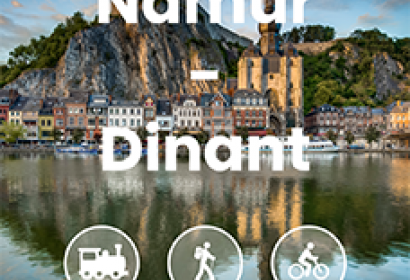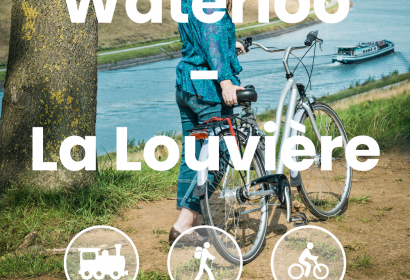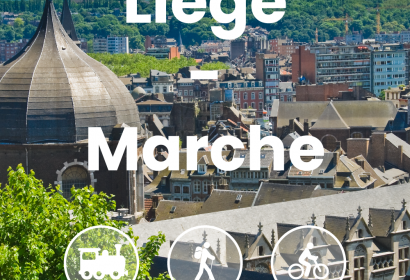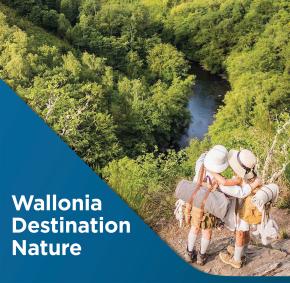TOP 5 THINGS TO DO IN SAINT-HUBERT
I’ve been wanting to visit Saint-Hubert ever since the last winter in Belgium. However, when I started to find more details about the place, I figured it is also awesome to visit Saint-Hubert in other seasons and this summer I was there.
1. FOREST BATH IN TENNEVILLE
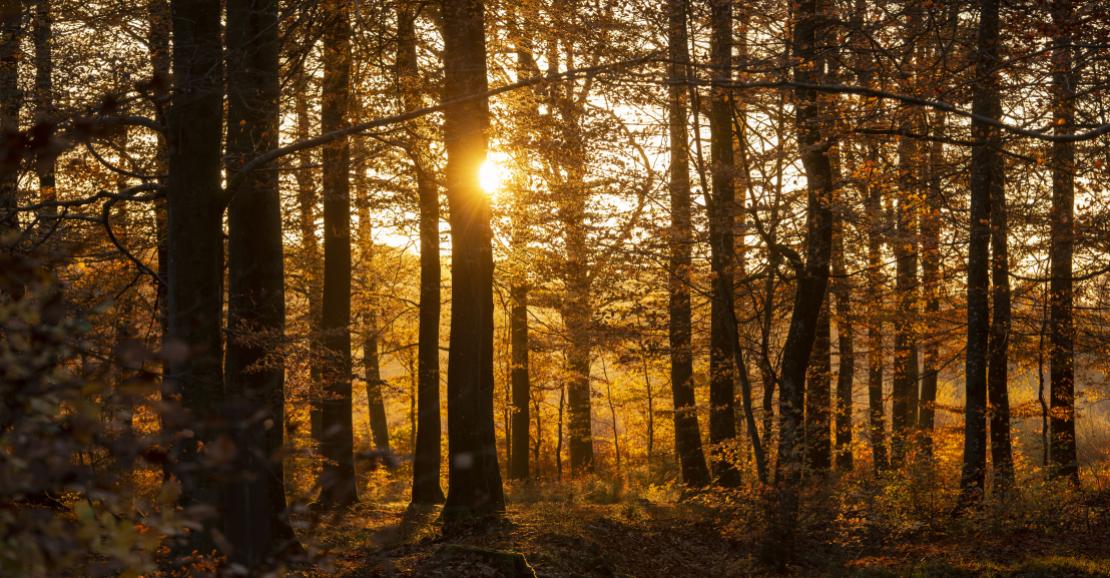 © dbcreation-MTFSH
© dbcreation-MTFSH
Tenneville’s tagline is ‘National 4 and so much more’. Since we visited here by car, we were indeed on N4 that connects Namur to Arlon and soon we were at Bois de la Fontaine in Laneuville-au-Bois which is a part of the Grand Forest of St.Hubert. The starting point of the Forest Bath Trail is right here.
About Forest Bathing: The concept of Forest Bathing evolved in Japan. Unlike trekking which is more active and physically exerting, forest bathing is a very slow, relaxed walk in the forest while soaking in the energy radiated by the nature all around you. Unlike hiking, in Forest Bathing, every sense of the body is activated & heightened and you use it all to immerse in the natural wealth of the forest.
Guided Forest bathing: We began our guided Forest Bath in Tenneville and within 5 minutes, our first stop was close to a stream. We were asked to close our eyes and just hear the sounds of nature. We took it a step further and we stepped into the stream, held our hands together, closed our eyes. It was energizing to hear the sounds of nature and feel the flow of water and since our eyes were closed, our ears were more attentive! At that very moment, I truly felt how different this was when compared to hiking. Though I do feel & listen to the sounds of nature while hiking, it is generally longer distances and a bit more strenuous, so the concentration isn’t on ‘soaking in nature’. But here, the distance is much shorter, the terrain is plain and the emphasis is on getting all the energy of the forest through each and every sense of the body.
Then we slowly walked to our next stop while watching some insects and little animals including a toad that jumped out of the berry bushes when we tried to pluck some of those. The next thing we did was to remove our footwear and we began walking barefoot in the forest. The leaves on the ground were damp and the tree trunks had moss on them. Feeling those textures and sensations through the feet is not something I’ve ever experienced. The next step was to touch & hug a tree, and feel the difference of sensations between the moss-covered soft areas and the tough barks while having your eyes closed. Again, the sense of touch was sharp when the eyes were closed.
Each and every stop heightens a different sense of the body and makes it more aware. Normally, after a hike, I’d feel a bit tired depending on how long or difficult the trail was, but Forest Bathing left me completely energized. The entire trail was just 1.1km and it was completely flat without any climbs or descents. The region is also called the ‘Trail of Ants’ which is why, the symbol of the waymarked trail is, as you may have guessed, Ants! For someone like me, who lives in the city, this Forest Bathing experience completely connected me back to nature. It was truly something!
- Forest Bath in Tenneville (Sentier didactique du Bois de la Fontaine) Map
- Starting point of the trail
2. DOMAINE DU FOURNEAU SAINT-MICHEL
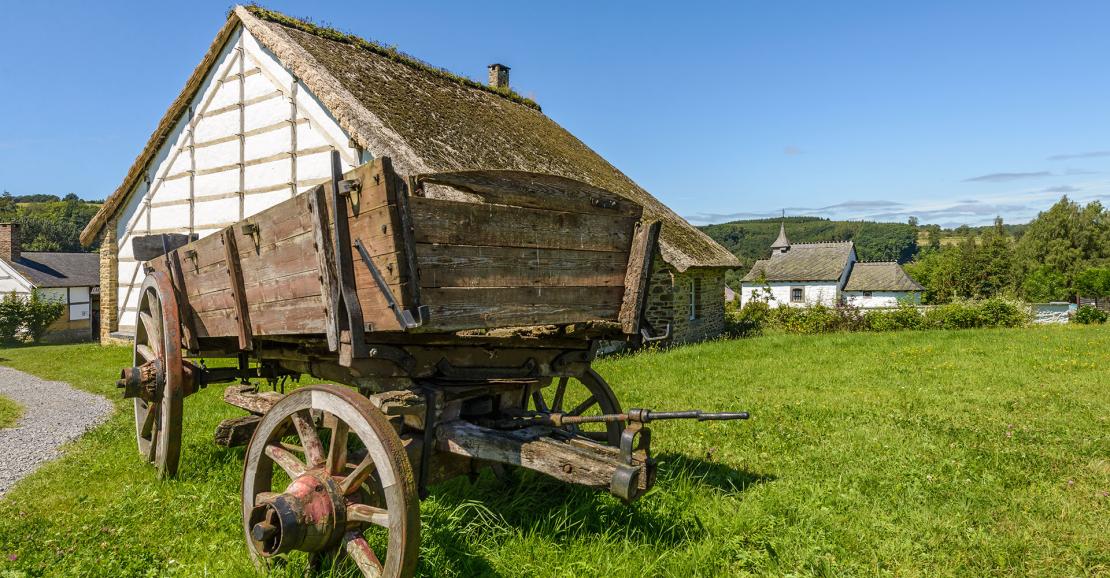 © WBT - J.P.Remy
© WBT - J.P.Remy
One of the must-visit museums in Saint-Hubert is the Domaine du Fourneau Saint-Michel. There are 2 museums here - Iron Museum & the open-air Museum of Country Life in Wallonia.
Our first stop was at the Open-Air Museum of Country Life in Wallonia (Le Musée de plein air). It is a humongous museum that covers 40 hectares of area, filled with many examples of how life happened, how people lived, in this area, centuries ago. The whole area is segregated into various sections - 8 sections for 8 different regions and 5 sections for 5 various village industries & occupations.
More than 50 original buildings from various places including houses, grocery shops, workshops of bakers, cobblers, blacksmiths etc, windmills, watermills and even a chapel have been transplanted to the museum. There was also an example of how the thatched roof of the houses was traditionally made. There was even a little school classroom complete with the traditional school bell which isn’t any different from a church bell! Scattered all over, in the entire domain, were various historic items including a wooden snowplough, a water pump etc. Then there was also a barn, with a hand-operated wool fulling machine, bull-drawn tractors and more.
In the midst of the walking path, we spotted a yellow bench, but that which went ‘through’ a tree’s trunk. Interestingly this is an artwork of Patrick Damazeau.
A very short walk away from the open-air museum is the Iron Museum (Musée du Fer). The reason why this hasn’t been transplanted to the main premises is because this is the only Charcoal Blast Furnace preserved in situ in entire Belgium. Right from various tools used in cast-iron production, the workshops and more have been conserved as they were.
- Domaine du Fourneau Saint-Michel location : Fourneau Saint-Michel 4,6870 Saint-Hubert
- Buy your Domaine du Fourneau Saint-Michel tickets here
Lunch/Dinner at Auberge Du Prevost: Just beside the Open-Air Museum of Domaine du Fourneau Saint-Michel is the Auberge du Prevost restaurant and is one of the best restaurants in Saint-Hubert to stop for lunch or dinner (It is open till 9:00PM only during summer and otherwise it is open till 6:00PM). It is housed in a charming, half-timbered, historic building. The menu is excellent mostly made with local produce including a few vegetarian options. We chose the Ratatouille and Raviolis. The food was delicious and was topped with fresh herbs. A very healthy and hearty dish for sure.
- Auberge du Prevost location: Rue du Fourneau Saint-Michel 2, 6870 Saint-Hubert
- Reserve a table at Auberge du Prevost for lunch/dinner here
3. PARC À GIBIER WILDLIFE PARK
Parc à Gibier is one of the best places to visit in Saint-Hubert with kids. A home for the local wildlife including wild boars, deer & stags, mountain goats, ponies, foxes and many more.
There is a minor challenge as soon as you enter with kids: there’s a playground which is definitely irresistible for kids and to take them past it, to the main wildlife park area is not very easy! But once you manage to do that, then comes the incredible walk through the deer enclosure; I literally mean walk through them. Parc à Gibier is one of the very few places which allows humans to walk into the enclosures of the deer & stags and you get to see them up & close like farm animals. While petting or feeding the deer isn’t allowed, it is possible to observe them from about just 10m away without any fencing in between! Of course, if you scare them or try to get closer, they will run away. We stood behind a tree about 10m away from the herd and watched them silently for quite some time. They were relaxed and so were we…
The walking trail then passes by the enclosures of wild boars, foxes, mountain goats, other species of deer and more, which aren’t open for visitors to enter. One of the new arrivals in the wildlife park, when we visited, were the racoons. They were pretty shy in the new environment, but one did peek out of its little barn to say hello to me. There are also some rabbits, hares, peacocks, pheasants etc.
There are quite a few climbs & descents in this trail and it isn’t stroller friendly as well, but it is nothing that an active toddler wouldn’t handle. If you’re with a toddler, once you’re back to the entrance/exit point, it is time for the playground! With a little zipline, an obstacle course including some climbing & balancing games this is a perfect way to wrap up the visit to Parc à Gibier with kids.
- Parc à Gibier Saint-Michel location : Rue Saint-Michel 125, 6870 Saint-Hubert
- Buy your Parc à Gibier Saint-Michel tickets here
4. SAINT HUBERT BASILICA
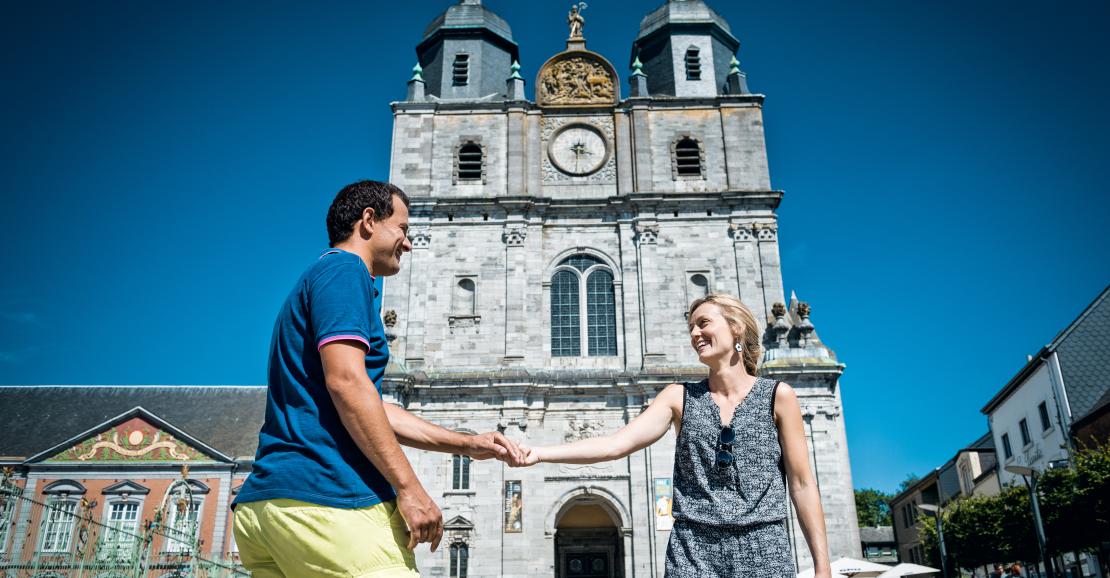 © WBT - Bruno D'Alimonte
© WBT - Bruno D'Alimonte
Being a region with an abundance of deer, there’s no wonder the local mythology is also around deers. The story of Saint Hubert is that when he was hunting in the Ardenne forest, he saw a majestic stag with a crucifix floating over its head, between the antlers. He then heard a voice that instructed him to seek the Lord and lead a holy life.
Saint-Hubert Basilica is humongous and is located in the central square of the town, just opposite the Tourism office. In fact, the first floor of the Tourism office lends a majestic, panoramic view of the Basilica & its fountain.
Saint-Hubert Basilica history: The history of the basilica dates back to around 665-775 CE, when it was built as a monastery. Much much later in 1525 CE the abbey was ravaged by fire, so in 1530-40 CE restoration began and a new façade was built, as well as the nave, choir, crypt etc. More constructions happened over the next couple of decades. Again in 1568 CE, it was again set to fire during a religious unrest. Then again it was renovated and most of what you see today is from the early 18th C CE. Further renovations & expansions happened over the next centuries. It was elevated to the status of Basilica in 1927 CE.
Don’t miss these in Saint-Hubert Basilica: During the unrest of 1568 CE, the relics of St.Hubert were lost. All that’s remaining are shreds of his scarf fabric which have been safeguarded today in a shrine and is on the display. Another important thing is a set of 4 sculptures that looks like marble, but are actually made of wood! These 4 evangelists are the masterpieces of Guillaume Évrard and were sculpted by him in the mid-18th C CE. The Altar entirely belongs to early 18th C CE and is heavily decorated in a Baroque style.
- Saint Hubert Basilica location: 6870 Saint-Hubert
5. DEER WATCHING - HIKING & VIEWPOINTS
 © Domaine des Grottes de Han
© Domaine des Grottes de Han
When the symbol of a town is deer, it is essential to go on a hike to see some more deers, up & close in their wildest habitat, and if possible, try to observe their activities and listen to their slab (mating call). One of the best hiking routes in Saint-Hubert is Promenade de Mochamps No: 7. It is about 10km long and it goes through the Priesse Tower, an observation point that lends a panoramic view of the grasslands which is frequented by the deer & stags. It is closed during the mating period (mid Sept - mid Oct) though, which is when the bawling (slab) happens. However, with some luck, it might be possible to hear those bawls in early September. There are some guided tours that happen in the region during this time to help nature enthusiasts to hear the rutting, without disturbing the wildlife.
That said, Saint-Hubert is also an absolutely gorgeous location to go hiking in winter when the entire terrain is covered with snow. It is fun to see the gliders & small planes with a layer of snow on them, at the Saint-Hubert aerodrome. The viewpoint located very close to the airport lends a great view of the valley. While it is possible to see a few stags when it is snowing, the main reason to hike in Saint-Hubert in winter is to see this place with a pristine white blanket on. It looks like a paradise! It is also a good place to take kids for their first skiing experience! Saint-Hubert - La Borne trail starts at the tourism office in the town centre and goes via the Saint-Hubert aerodrome as well as the observation point. The trail is 14km, so it might be a good idea to shorten it if you’re visiting with kids.
- Saint-Hubert - La Borne (SH07) Map
- Saint-Hubert Tourism Office location: Pl. du Marché 15, 6870 Saint-Hubert
WHERE TO STAY IN SAINT-HUBERT
Saint Hubert is one of the best places for camping at Ardennes. There are several camping grounds in and around the town including Europacamp, Val de Poix camping site etc. There are some charming holiday homes as well like Couleurs d’Ardenne, Le Beau Site - L'Annexe etc. Of course, there are a few regular hotels in the town centre.
WHAT TO EAT IN SAINT-HUBERT
St Hubertus Abbey Beer: When you’re in Belgium, you shouldn’t miss tasting the local craft beer no matter where you go. The town of Saint-Hubert is no exception. Though abbey beer has been in existence here for a long time, St.Hubertus beer has been brewed since 2018. It comes in 3 variants - Wheat beer, Triple Blond & Triple Amber.
Prison Cheese: Here’s an intriguing fact. The prison in Saint-Hubert has more than 200 cows and regularly manufacture dairy products, especially cheese! A very noble initiative and should be supported by all visitors & tourists alike.
If you eat meat, don’t miss Saint-Hubert’s Charcuterie board and Borquin which is a locally manufactured sausage made of pork with herbs & spices.
HOW TO REACH SAINT-HUBERT
How to reach Saint-Hubert by car: Saint-Hubert is located 140km from Brussels on the N4 via Namur & Marche-en-Famenne.
How to reach Saint-Hubert by public transport: It is possible but it is neither easy nor direct to reach Saint-Hubert entirely depending on public transport. One option is to take a train to Marloie, then a bus to Champlon and another bus to Saint-Hubert. It takes about 3 hours to reach. But it has to be precisely planned because these buses run only once in 2 hours. A much easier option is to take your bike on the train till Poix-Saint-Hubert which is located about 7km from Saint-Hubert town centre. Poix-Saint-Hubert can be reached by a direct train from Marloie.
SAINT-HUBERT ITINERARIES
One day in Saint-Hubert: Begin with a relaxing Forest Bath, lunch at Auberge Du Prevost and then visit Domaine du Fourneau Saint-Michel and wrap up with the Basilica.
One day in Saint-Hubert with kids: Begin with a quicker Forest Bath, lunch at Auberge Du Prevost, visit Parc à Gibier
Two days in Saint-Hubert:
Day 1 - Begin with a relaxing Forest Bath, lunch at Auberge Du Prevost and then visit Domaine du Fourneau Saint-Michel
Day 2 - Hiking & Deer watching in Forest Saint-Hubert (or Parc à Gibier if you’re with kids) and then visit Saint-Hubert Basilica.
About the Author: Bhushavali is an Indian travel blogger, currently living in Belgium. Her background in art history gives her the interest and insight to explore the historic & heritage sites in Belgium. Her primary interest is UNESCO Sites and she has visited 14 of the 15 Belgian UNESCO World Heritage Sites as well as the UNESCO Global Geopark. Visit her blog here: My Travelogue by Bhushavali.
